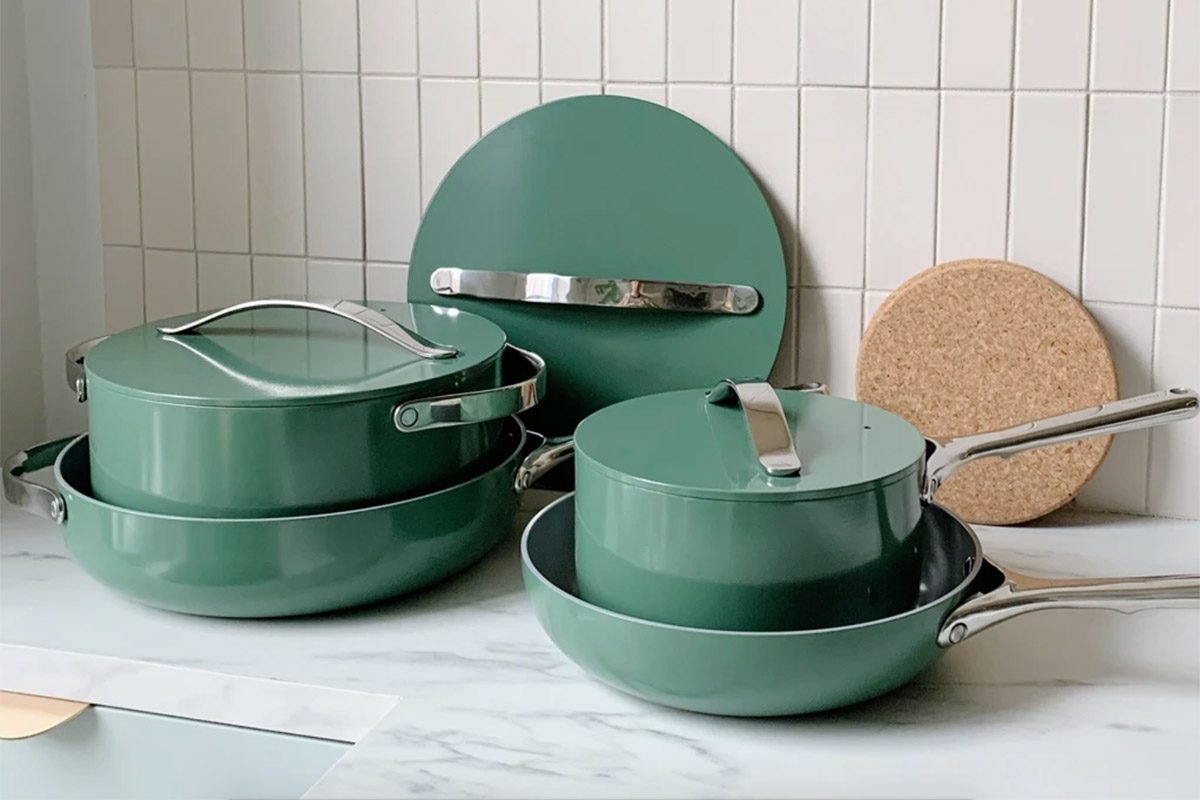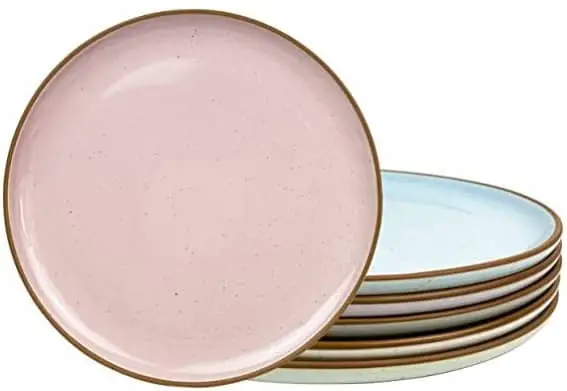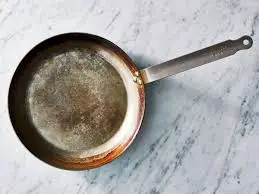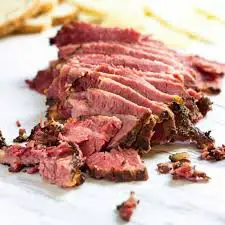Hard Anodized Vs Ceramic Cookware
Hard anodized Vs Ceramic—which one should you buy? This topic often crops up in cooking forums and is hotly debated. For one thing, both sides have a strong fan base and the staunch supporters would not allow themselves to be outdone by the opposition in the debate. Read on if you want to more about this topic.
Now let me begin with a question.How much attention do you pay regarding the choice of cookware? Do you pay attention to the labels and what they say, or do you settle for the design of the cookware?
If you are one of those who have always wondered what the differences are between ceramic and hard anodized cookware, read on to get to the heart of the matter.
Hard anodized or ceramic – which type of cookware to choose?
Anodized pots and pans
It’s best to first understand the technical difference between the two. The anodizing process involves using chemical baths that add a thicker layer to the surface of the pan.
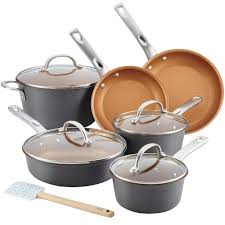 This coating treats the aluminum so that it is firmly anchored to the surface of the pan. This is followed by an oxidation process that ensures that the pan has non-stick properties.
This coating treats the aluminum so that it is firmly anchored to the surface of the pan. This is followed by an oxidation process that ensures that the pan has non-stick properties.
Anodized cookware is lightweight and as durable as stainless steel cookware; it does not absorb food odors, is porous and does not scratch easily. Precisely for this reason, many professional chefs prefer them.
Ceramic pots and pans

As for ceramic cookware, there is not much to explain, except that these products can be made of ceramic, clay or other similar elements. Professional chefs often claim that the ceramic coating does not leach chemicals and cooks more evenly than other nonstick pans.
Currently, ceramic cookware is considered the safest cookware when there is concern that chemicals may enter the food during cooking.
As one of the most recent inventions, research has not gone very far. Some claim that ceramic cookware has a shorter shelf life. One thing that can affect durability is the use of oil, which must be rinsed vigorously to thoroughly clean the ceramic coating.
Unfortunately, this rubbing also causes the coating to flake off over time, essentially ruining your cookware.
Some manufacturers have chosen to develop cookware with more than one ceramic coating, which makes the pan a little thicker. This has the advantage of making your cookware last much longer, even if it is easily damaged or scratched over time.
The thicker the layers of ceramic, the longer your cookware will last.
Hard anodized VS ceramic : which one to choose?
One thing is certain: hard-anodized cookware can withstand very high temperatures and rough handling, is very light and as strong as stainless steel, and cannot be scratched by metal utensils.
Professional chefs prefer anodized cookware. So, if you are a professional or if you cook every day and your cookware has to combat your busy schedule, then hard anodized pans are for you.
When you think about your health
However, if you are more concerned about your family’s health and don’t need a professional high performance professional pan, ceramic coated cookware is obviously the best choice for you. Another type of non-stick cookware you can find in the ceramic category is micro-stone coated cookware.
They too contain no leaching chemicals and are ten times harder than other similar non-stick pans. Surely, oil is not essential if you are a health-conscious user.
If you are looking for variety
When it comes to the variety of ceramic or hard-anodized kitchen utensils, you will have a hard time looking for the different types of hard anodized products. On the other hand, you will find a wide variety of ceramic kitchen utensils in terms of design, colors, shapes, styles and even the specific materials used (clay, ceramic, micro stone, etc.).
Of late, the number of users buying ceramic-coated cookware is increasing considerably, perhaps due to health problems associated with other non-stick pans such as Teflon and aluminum coating, including hard anodizing. In addition, the variety of ceramic cookware may be another reason for the growing popularity of these products over time. But as mentioned above, hard anodized utensils are mainly used by professional chefs, so there are fans on both sides.
In terms of usability, ceramic coating offers a non-stick option that is user-friendly. In addition, ceramic pots and pans are much easier to clean than their hard anodized counterparts. Plus, you don’t need to use oil when using non-stick ceramic cookware, which makes cleaning up afterwards much easier.
Wrapping up
Hard anodized vs Ceramic Cookware
As you can see, hard anodized and ceramic coated cookware has incredible benefits and advantages. Both clearly have pros and cons, and depending on your own preferences and needs, you can choose one or the other. One thing is for sure, you won’t be disappointed irrespective of your choice.
Check out the manufacturers’ websites and read what they specifically offer. Read why certain features of anodized or ceramic cookware are better than the competition. What we discussed above applies to all hard anodized and ceramic products. However, they may vary from one manufacturer to another. You may need to do your due diligence before taking a final buying decision.
However, hard anodized products are ideal for cooking at high temperatures, as is common in the restaurant industry. These pans are very durable and can withstand aggressive handling and metal utensils without scratching. If they can’t be scratched, it means the surface will stay intact much longer, giving the cookware a longer lifespan.
Ceramic products are absolutely right for you if you are health-conscious and want a non-stick variety. There is no chemical leaching that takes place. You ought to remember that the surface is much more delicate and you should use only wooden utensils for cooking. The variety of products will surprise you, but don’t be intimidated. Any product labeled “ceramic” has the above common characteristics that I have already mentioned. Now it is time you made your decision and go cooking!
Related Post: Ceramic Vs Stainless Steel Cooware
